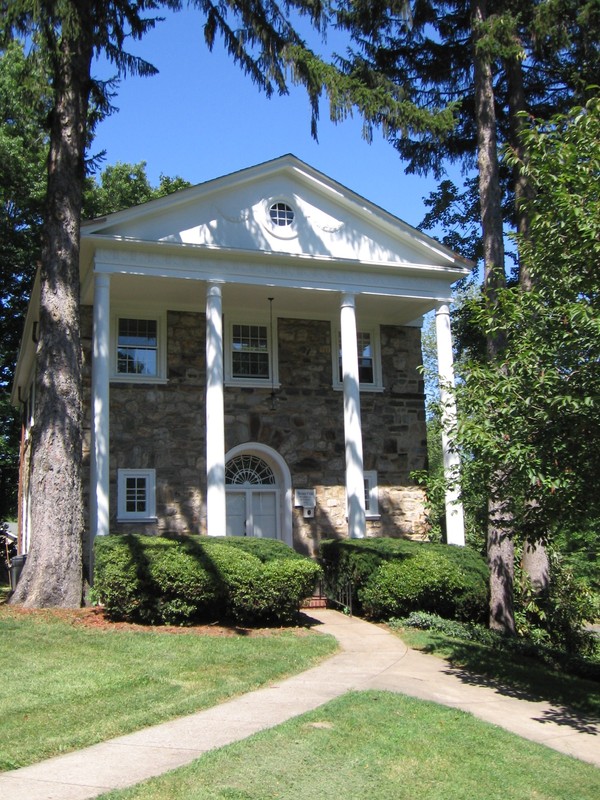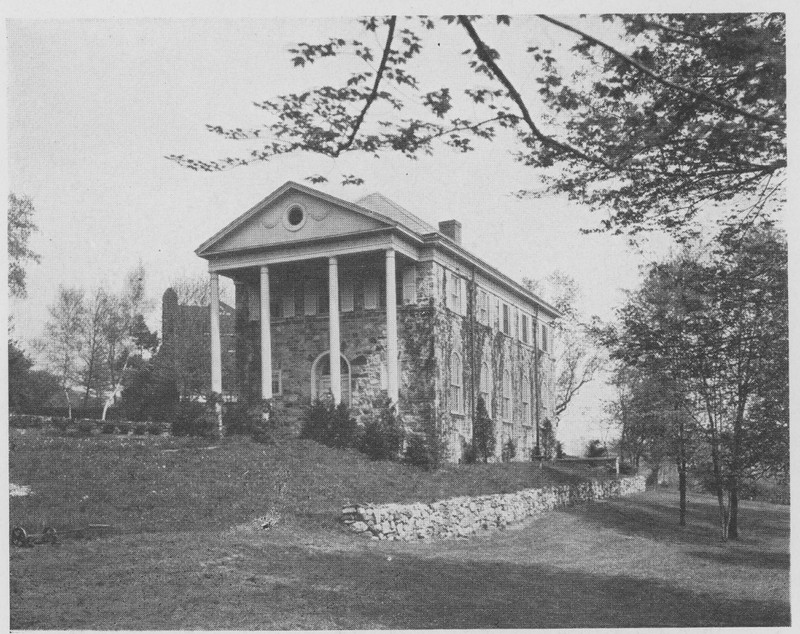Thomas Paine Memorial Building
Introduction
Text-to-speech Audio
The Thomas Paine Memorial Building was erected in 1925 as a tribute to Thomas Paine by the Thomas Paine National Historical Association, which was established in 1884. It is a significant example of Colonial Revival-style architecture, designed by a local and prominent architect, Laurence Loeb.
Images


Backstory and Context
Text-to-speech Audio
The concept and design of the Thomas Paine Memorial Building, construction for which was begun in 1925, resulted in a monumental, fire-proof structure for the housing and scholarly use of archival materials and artifacts related to Thomas Paine, as well as an opportunity for public gatherings and displays. The building was largely funded by a $35,000 bequest from John H. Ludwig of the Bronx, and $4,000 from Edward Tuck of Paris, from royalties of the 10-volume works of Paine, and from the biography written by W.M. Van der Weyde, the president of the Thomas Paine National Historical Association. Thomas Alva Edison broke ground for the Memorial Library on Memorial Day, May 30, 1925, which was also the sesquicentennial year of the publication of Paine’s Common Sense. Edison was a great admirer of Paine.
The architect for the building, Laurence Loeb, also designed New Rochelle’s impressive Memorial Recreation Building at City Park, as well as the World War I Monument in Faneuil Park. In a Reconnaissance Survey prepared by Taylor & Taylor for City of New Rochelle, 1997, the Thomas Paine Memorial Building is described as “a rectangular gable-roofed, gable-end-oriented masonry building of two stories, with a basement. The Colonial Revival-design features a symmetrical three-bay façade with a centered entry. The main entry is round-arched, with a delicate fanlight and double paneled doors. The roof extends beyond the plane of the façade and is incorporated into a full portico, supported by attenuated columns and including an oculus centered in the pediment, which is further trimmed with a swag ornament. The side elevations are of five bays; all sash is multi-light.” The building was constructed with a foyer, a memorial hall, and an apartment on the second floor, which would serve as a residence for a number of curators over the years. A 19’ X 16’ addition in the rear of the building was completed in 1943.
From the time the Memorial Building was completed, the Huguenot and New Rochelle Historical Association and Thomas Paine National Historical Association operated side-by-side, and for several years in the 1980s – 1990s, as one organization. The Memorial Building housed exhibits, including a large and comprehensive interpretation of the community’s past during the city’s Tricentennial in 1988. The building also housed a library that could be accessed by researchers during set hours, and within the confines of the building. In the 1990s the Huguenot-New Rochelle Historical Association and the Thomas Paine National Historical Association separated and the Hufeland Collection, which was comprised of archival materials pertaining to New Rochelle and the county, were transferred to the Westchester County Historical Society archives. In April 2009, the remainder of the collection, which was largely related to Paine, was transferred to the Ryan Library at Iona College, in the summer of 2010. The collection is maintained by the Institute of Paine Studies at Iona College, in partnership with the Thomas Paine National Historical Association.
The Thomas Paine Memorial Building is eligible for Listing on the National Register of Historic Places and is a locally designated landmark.
(This entry was prepared by Barbara Davis of the Westchester County Historical Society)
Cite This Entry
Dylan Pirone on behalf of Westchester County Historical Society. "Thomas Paine Memorial Building." Clio: Your Guide to History. December 16, 2021. Accessed August 3, 2025. https://theclio.com/entry/14883/tour/1/reverse
Sources
Reconnaissance-Level Historic Resource Survey City of New Rochelle, Westchester County, New York, prepared by Taylor & Taylor Associates, 1997.
Commemorative Booklet: “Rededication of the Paine Monument and Assignment of its Custody to the City of New Rochelle: A Record of the Exercises and Report of the Speeches Delivered at the Monument on Saturday, October 14th 1905,” compiled by James B. Elliott, Secretary of the Paine Memorial Association, Philadelphia, Pa., 1909.
“Sculptor MacDonald Dead,” New York Times, August 16, 1908. P. 7.
“
“Forgotten Sculptor has Day in Gallery,” New York Times, June 15, 1986
Historical Landmarks of New Rochelle, Seacord, Morgan, Huguenot and Historical Association, 1938, pp. 125-126
Historic New Rochelle, Nichols, Herbert B., The Board of Education, New Rochelle, NY, 1938. Pp. 145 - 147
